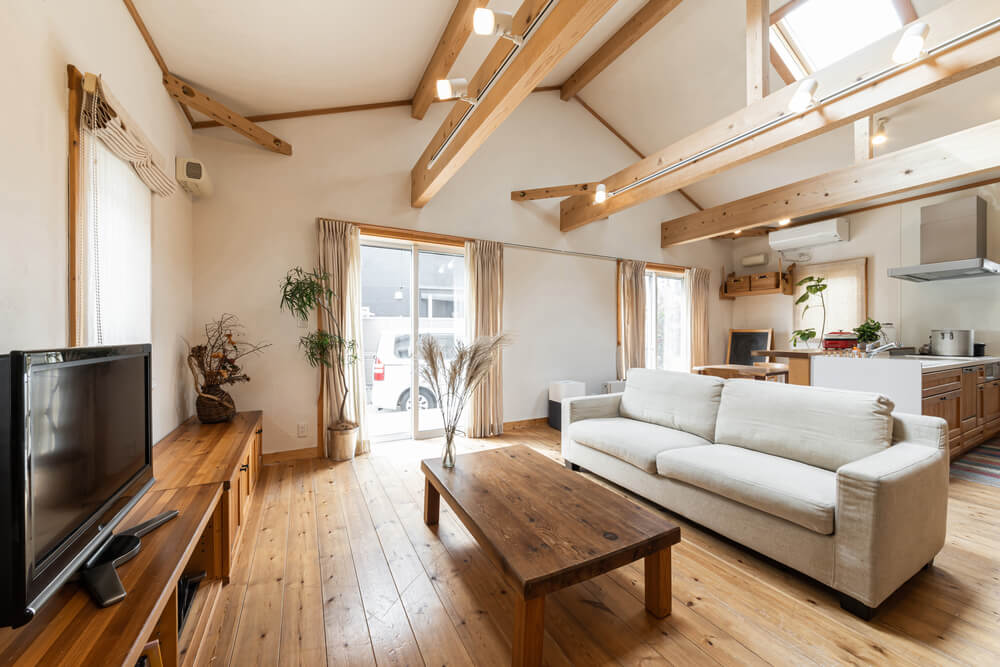From providing natural light to enhancing a room’s architectural beauty, skylights are a compelling addition to any living space. However, it is pitched roof skylights, with their distinctive style and allure, that truly stand out.
This article takes an explorative journey into the aesthetic impact of pitched roof skylights, delving into their transformative effects on home decor.
Understanding Skylights
Brief History of Skylights
Skylights have illuminated our living spaces for centuries. Originating in ancient Roman architecture, they’ve evolved from simple openings in roofs to sophisticated design elements. Particularly, pitched roof skylights have emerged as a favourite in modern design, thanks to their capacity to marry form with function, bringing light and style into homes.
Types of Skylights for Pitched Roofs
Skylights can be categorised into three main types, each of which is suitable for pitched roofs, possessing unique aesthetic and functional attributes:
Fixed Skylights:
Fixed skylights are permanent, non-opening fixtures that provide consistent, unfiltered natural light. These skylights are ideal for rooms where extra ventilation isn’t necessary but increased light is desired.
Benefits:
-
- Fixed skylights offer uninterrupted views of the sky, contributing to the aesthetic appeal of a space by providing a visually pleasing focal point.
- These skylights are often more energy-efficient than other types because they’re sealed, reducing the chance of air leaks.
- They require minimal maintenance since they lack moving parts that may need repair or replacement over time.
Drawbacks:
-
- Since they don’t open, fixed skylights can’t provide additional ventilation.
- During hotter months, fixed skylights might lead to increased heat gain unless adequately treated with heat-absorbing glazes or reflective coatings.
Ventilating Skylights:
These skylights can be opened, either manually or via a remote control, to allow for air circulation. They’re particularly beneficial in rooms where excess moisture may be an issue, such as kitchens or bathrooms.
Benefits:
-
- Ventilating skylights can improve air quality and reduce reliance on artificial air conditioning, offering an environmentally friendly solution.
- The ability to open these skylights adds a dynamic visual interest to your room, making the space feel more alive and responsive to weather and climate.
Drawbacks:
-
- Ventilating skylights typically require more maintenance than fixed skylights due to their mechanical components.
- If not properly installed or maintained, these skylights might become sources of water leakage during rainy periods.
Tubular Skylights:
Tubular skylights, also known as “sun tunnels,” are designed for small or tight spaces where traditional skylights might not fit. These skylights capture sunlight through a dome on the roof and channel it into a room via a reflective tube.
Benefits:
-
- Tubular skylights can provide natural light to otherwise dark spaces such as closets, hallways, or small bathrooms.
- Despite their small size, they can create striking lighting effects, adding a unique aesthetic touch to your decor.
Drawbacks:
-
- Since they’re smaller than other types of skylights, they may not provide as much light.
- Tubular skylights typically don’t open, so they don’t offer the benefit of additional ventilation.
- The concentrated light they provide might sometimes be too intense, depending on the room’s use. Some people find the lighting effect less natural than that provided by larger skylights.
Aesthetic Impact of Pitched Roof Skylights
Light Enhancement
A fundamental aesthetic benefit of skylights is the enhancement of natural lighting. Sunlight streaming through a skylight can illuminate shadowy corners, accentuate architectural details, and create a pleasant, inviting ambience. The quality and drama of the light change throughout the day, offering a captivating display of light and shadow play.
Spatial Perception
By offering a glimpse of the expansive sky, skylights create an illusion of larger, more open spaces. Research in environmental psychology suggests that environments with higher perceived spaciousness improve mood and well-being, enhancing the overall aesthetic experience of a room.
Architectural Appeal
Skylights, especially those fitted into pitched roofs, add architectural depth both inside and outside the home. They offer an interesting visual break in the ceiling plane, producing a dynamic architectural feature that can be both modern and timeless.
Style Integration
Regardless of your preferred decor style, pitched roof skylights can be seamlessly integrated. Whether it’s adding a sleek touch to a modern living room or contributing to the airy, minimalistic feel of a Scandinavian-inspired space, the versatile nature of skylights allows them to blend effortlessly into any decor scheme.
Considerations When Incorporating Skylights into Home Decor
Placement
The placement of a skylight can significantly impact a room’s aesthetics. When positioned correctly, a skylight can highlight a room’s best features or offer desired views. The pitch of the roof also plays a crucial role; the higher the pitch, the more vertical the skylight, which can affect the direction and intensity of the incoming light.
Size and Shape
The size and shape of a skylight can dramatically influence the aesthetic of a room. Larger skylights create a striking design statement but must be proportionate to the room’s size. Similarly, the shape can affect the style—rectangular skylights lend a contemporary feel, while rounded or unusual shapes may give a more eclectic look.
Glass Type
The choice of glass can also impact the room’s aesthetics. Clear glass offers unobstructed views and maximum light, while tinted glass can create mood lighting effects. Frosted or textured glass, on the other hand, provides privacy without sacrificing light.
Conclusion
The aesthetic appeal of pitched roof skylights is undeniable. They provide a unique blend of architectural interest, natural light enhancement, and decor integration. By considering factors like placement, size, shape, and glass type, homeowners can ensure their skylights enhance their living spaces in truly beautiful ways.

